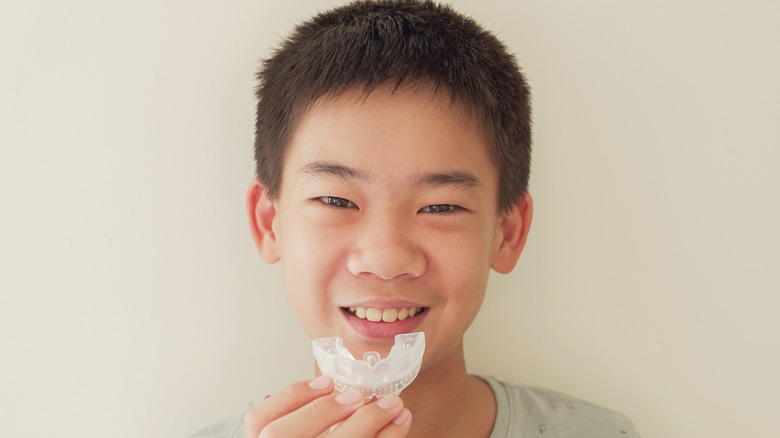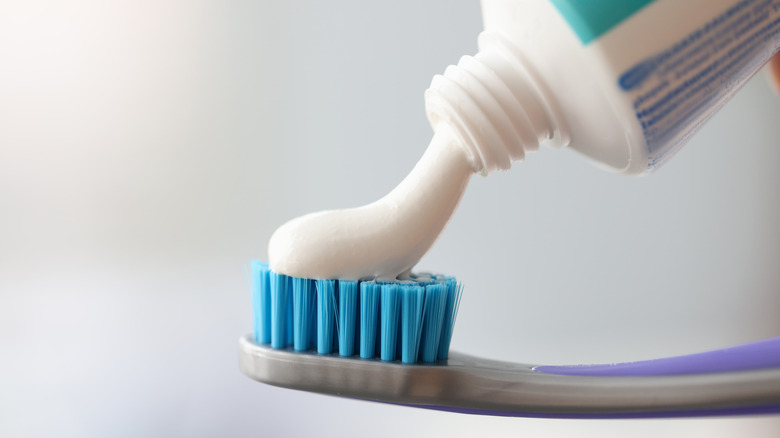The Proper Way To Be Cleaning Your Mouth Guard
Mouth guards serve a very practical purpose — they protect your teeth from injury, which can occur if you play rigorous, contact sports, or even if you have a tendency to grind your teeth while you sleep, explains WebMD. The Cleveland Clinic adds that mouth guards not only keep your teeth fully intact, but also prevent deeper nerve and soft tissue damage that can come with tooth and mouth injuries. This goes a long way in preventing costly repairs.
A device that is generally fitted just to the upper teeth, mouth guards come in multiple styles (via WebMD). If you aren't concerned with getting a customized fit, you can opt for a stock mouth guard that can be purchased at sporting stores. You simply pop it in your mouth and go about your activity. For a bit more protection — and a guarantee that the mouth guard will stay in your mouth — you can buy the kind that you boil at home and mold to your teeth. Finally, your dentist can fit you for a professionally molded mouth guard that offers the best (though most expensive) protection.
The Cleveland Clinic points out that you'll need to replace your mouth guard if there are any signs of wear and tear to keep it from losing its effectiveness. To ensure its longevity and safety, there are some care guidelines you should keep in mind, particularly around cleaning it.
There are various ways you can clean your mouth guard
Healthline explains that the number one reason to make sure you properly clean your mouth guard in between uses is to keep harmful bacteria from building up and re-entering your mouth upon the next use. Cleaning your mouth guard will also make it last longer and prevent it from developing unpleasant odors.
There are multiple ways you can keep your mouth guard clean. The first is a simple brushing with toothpaste and a soft-bristled toothbrush (via Healthline). You can brush the device as you would your teeth, getting into all the nooks and crannies, and then let it air dry. Another effective method is using soap and water — any non-alcohol soap will do. Once you've brushed the mouth guard with soap, you'll once again leave it to fully dry before storing it. If you want to go for an even deeper clean, you can also opt for vinegar and hydrogen peroxide. First, let the device sit in the vinegar for around half an hour. Then, empty the vinegar and replace it with hydrogen peroxide. Let the mouth guard soak for another half hour and use plain water to rinse it off afterward.
The American Dental Association adds that proper storage of the mouth guard also goes a long way in keeping it clean. It should only be stored when fully dry and placed in a specific container that includes air holes for adequate air circulation.


